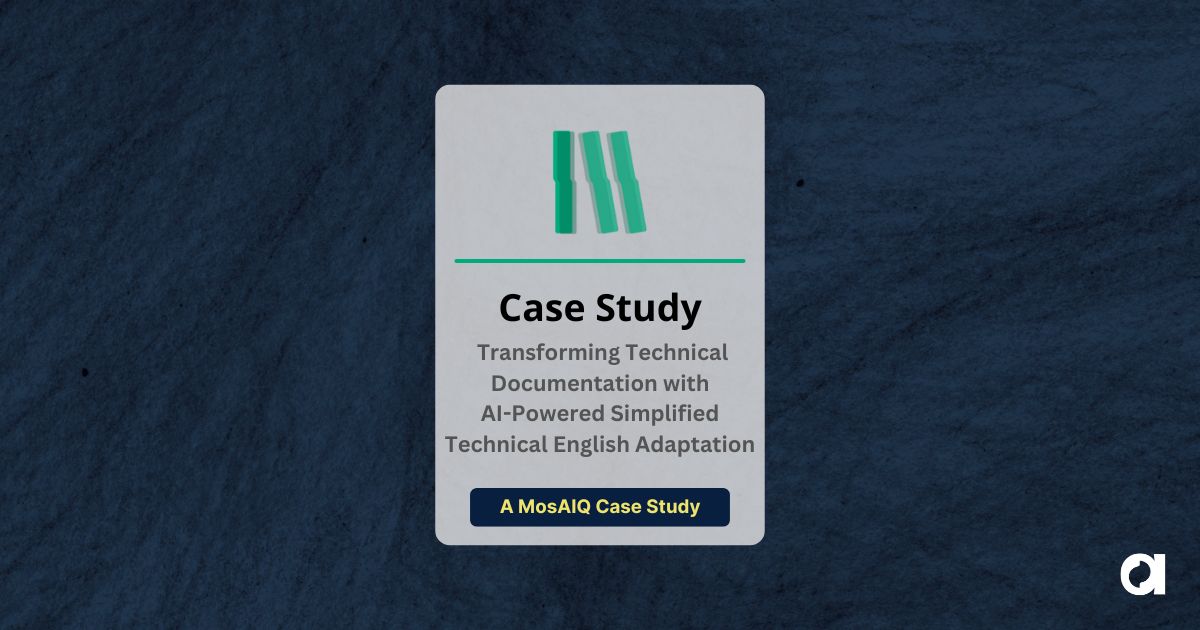Localization feedback always begins with good intentions. A translation goes out for review, the reviewer sends back changes, and the linguist incorporates them. The reviewer then asks to see the translation again. Another round follows. This time, a different reviewer flags an unrelated issue and requests additional edits. Before long, the localization project becomes an endless cycle of small revisions and conflicting comments. Timelines stretch out, and every day the review process bogs down more. Now you’re in a feedback loop that never ends.
It happens all the time. Without clear structure and decision-making, feedback loops can become endlessly self-perpetuating. Companies rely on review feedback to make translations more accurate and effective, but when the feedback cycle lacks a defined process and end point, it achieves the opposite effect. Instead of clarity, it creates confusion, repetition, and frustration for everyone involved.
Organizations don’t set out to create endless revision cycles, but many find themselves stuck in them anyway. The key to breaking free is understanding why feedback loops go off-track in the first place and recognizing how structured feedback processes differ from those that repeatedly cover the same ground.
Is It Really Feedback or a Broken Loop?
A well-structured feedback loop keeps localization moving forward. It defines who provides input, how and when that input is gathered, and who makes the final decisions. This clarity sustains momentum, ensuring that feedback leads to measurable improvements, smoother workflows, and stronger translation quality over time.

When feedback loops lose structure, they start repeating themselves instead of refining the process. The same issues get flagged again and again, feedback arrives from too many sources with no clear prioritization, and preference-based edits slow things down instead of creating meaningful improvements. Instead of helping localization scale, the feedback process becomes a bottleneck that delays projects.
You can usually tell when a feedback loop is stuck. If review cycles seem endless or if changes are personal preferences rather than necessary corrections, the feedback process may need a reset. Without defined roles and clear decision-making, feedback stops being beneficial and becomes just another round of review with no clear endpoint.
Scaling Up or Slowing Down? Why Feedback Loops Need Structure to Succeed
A well-structured feedback loop makes localization smoother and more efficient over time. Instead of treating every project like a reset, companies can build on past insights, create a more predictable process, and reduce work. Beyond efficiency, structured feedback directly improves translation quality by ensuring consistency, catching errors early, and refining terminology over time. When feedback is applied strategically, translation quality improves without unnecessary back-and-forth, and teams spend less time revisiting the same issues.
Without structure, feedback can slow things down instead of streamlining the process. If projects take longer than they should because the same issues keep appearing or decision-making is unclear, scaling localization becomes more challenging. A defined feedback process helps teams move through reviews more effectively, keeping localization efforts aligned and making each project easier than the last.

How to Keep Feedback Loops Moving
A feedback loop should be a controlled process, not an open-ended discussion. The key is to create structure and accountability so feedback improves localization without impacting project timelines. Here are some strategies to make your feedback process work for you, not the other way around.
Make the final call clear
Without a decision-maker, feedback can become an endless back-and-forth. Defining who has authority to approve or reject changes keeps review cycles from dragging on with conflicting input.
Distinguish necessary fixes from preferences
Not every piece of feedback needs to be implemented. Setting clear criteria for what counts as a meaningful correction instead of a personal preference helps keep revisions focused. Linguists and reviewers should work from a shared set of guidelines to prevent unnecessary rewrites.
Set review limits
Some feedback loops stretch on because there’s no defined endpoint. Limiting the number of review rounds prevents projects from stalling and encourages reviewers to focus on the most important changes.
Address recurring issues at the source
If the same problems are appearing across multiple projects, they may not be one-off mistakes but symptoms of a larger process issue. Reviewing the quality of your source text, updating glossaries, refining style guides, and providing better reviewer training helps prevent repeat corrections.
Work with a partner that structures feedback
A strong language services partner does more than pass feedback back and forth. They help structure the process, flag inconsistencies, and streamline decision-making. If feedback keeps circling without leading to real improvements, it may be time to reassess how the process is being managed.
Turning Feedback into an Advantage
A strong feedback loop does more than refine a single project. When structured well, it strengthens collaboration, reduces friction, and makes future localization projects easier to manage. Teams that handle feedback effectively create a system that supports predictable workflows and adapts as their business grows.
When review feedback is approached as part of a larger strategy, it becomes a tool for continuous improvement. Teams gain more control over the localization process, create efficiencies that compound over time, and develop a stronger foundation for scaling into new markets.
Every company’s localization needs evolve, and so should the way feedback is handled. If your current process feels slow, inconsistent, or harder than it should be, it may be time to rethink how feedback flows through your projects.
Contact us to learn how to build a feedback loop that streamlines your process and supports your long-term success.
 Leslie Iburg
6 min. read
Leslie Iburg
6 min. read
Saying that the Annual Enrollment Period (AEP) puts pressure on health plans is an understatement. For payers, it’s a high-volume, high-pressure stretch where communication must be clear, timely, and accessible in every language and format. Benefit summaries, plan changes, enrollment forms, and coverage information all need to be translated and delivered under tight timelines, with […]

 Leslie Iburg
8 min. read
Leslie Iburg
8 min. read
For years, language access in healthcare has been handled from the point of view of compliance. It was something that had to be done, but not necessarily something built into how care was delivered or measured. Today, that’s starting to change. More healthcare leaders are now taking a closer look at the connection between communication […]












